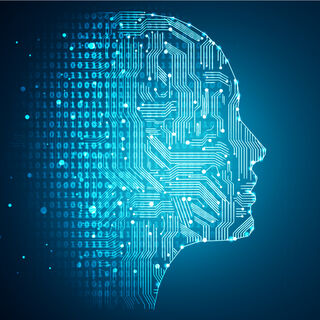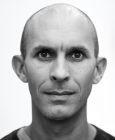Cognition
The Real Problem of Consciousness
What is it like to be you?
Posted October 21, 2021 Reviewed by Lybi Ma
For a conscious creature, there is something that it is like to be that creature. There is something it is like to be me, something it is like to be you, and probably something it is like to be a sheep, or a dolphin. For each of these creatures, subjective experiences are happening. It feels like something to be me. But there is almost certainly nothing it is like to be a bacterium, a blade of grass, or a toy robot. For these things, there is (presumably) never any subjective experience going on: no inner universe, no awareness, no consciousness.
This way of putting things is most closely associated with the philosopher Thomas Nagel, who in 1974 published a now-legendary article called “What is it like to be a bat?” in which he argued that while we humans could never experience the experiences of a bat, there nonetheless would be something it is like for the bat, to be a bat. This paper is one of the most influential in all philosophy of mind. I’ve always favored Nagel’s approach because it emphasizes phenomenology: the subjective properties of conscious experience, such as why a visual experience has the form, structure, and qualities that it does, as compared to the subjective properties of an emotional experience, or of an olfactory experience. In philosophy, these properties are sometimes also called “qualia”: the redness of red, the pang of jealousy, the sharp pain or dull throb of a toothache.
For an organism to be conscious, it has to have some kind of phenomenology for itself. Any kind of experience—any phenomenological property—counts as much as any other. Wherever there is experience, there is phenomenology; and wherever there is phenomenology, there is consciousness – there is experience. A creature that comes into being only for a moment will be conscious just as long as there is something it is like to be it, even if all that’s happening is a fleeting feeling of pain or pleasure.
We can usefully distinguish the phenomenological properties of consciousness from its functional and behavioral properties. These refer to the roles that consciousness may play in the operations of our minds and brains, and to the behaviors an organism is capable of, by virtue of having conscious experiences. Although the functions and behaviors associated with consciousness are important topics, they are not the best places to look for definitions. Consciousness is first and foremost about subjective experience—it is about phenomenology.
This may seem obvious, but it wasn’t always so. At various times in the past, being conscious has been confused with having language, being intelligent, or exhibiting behavior of a particular kind. But consciousness does not depend on outward behavior, as is clear during dreaming and for people suffering states of total bodily paralysis. To hold that language is needed for consciousness would be to say that babies, adults who have lost language abilities, and most if not all nonhuman animals lack consciousness. And complex abstract thinking is just one small part— though possibly a distinctively human part— of being conscious.
Some prominent theories in the science of consciousness continue to emphasize function and behavior over phenomenology. Foremost among these is the “global workspace” theory, which has been developed over many years by the psychologist Bernard Baars and the neuroscientist Stanislas Dehaene, among others. According to this theory, mental content (perceptions, thoughts, emotions, and so on) becomes conscious when it gains access to a “workspace,” which— anatomically speaking— is distributed across the frontal and parietal regions of the cortex.
Another prominent theory, called “higher-order thought” theory, proposes that mental content becomes conscious when there is a “higher-level” cognitive process that is somehow oriented toward it, rendering it conscious. In this theory, consciousness is closely tied to processes like metacognition— meaning “cognition about cognition”— which again emphasizes functional properties over phenomenology. Like global workspace theory, higher-order thought theories also emphasize frontal brain regions as key for consciousness.
Although these theories are interesting and influential, they both foreground the functional and behavioral aspects of consciousness, whereas the approach I will take starts from phenomenology— from experience itself—and only from there has things to say about function and behavior.
The definition of consciousness as “any kind of subjective experience whatsoever” is admittedly simple and may even sound trivial, but this is a good thing. When a complex phenomenon is incompletely understood, prematurely precise definitions can be constraining and even misleading. The history of science has demonstrated many times over that useful definitions evolve in tandem with scientific understanding, serving as scaffolds for scientific progress, rather than as starting points, or ends in themselves. In genetics, for example, the definition of a “gene” has changed considerably as molecular biology has advanced. In the same way, as our understanding of consciousness develops, its definition— or definitions— will evolve too. If, for now, we accept that consciousness is first and foremost about phenomenology, then we can move on to the next question.
How does consciousness happen? How do conscious experiences relate to the biophysical machinery inside our brains and our bodies? How indeed do they relate to the swirl of atoms or quarks or superstrings, or to whatever it is that the entirety of our universe ultimately consists in?
The classic formulation of this question is known as the “hard problem” of consciousness. This expression was coined by the Australian philosopher David Chalmers in the early 1990s and it has long set the agenda for much of consciousness science. Chalmers contrasts this hard problem of consciousness with the so-called “easy problem” – or easy problems – which have to do with all things that brains (and bodies) can accomplish that need not make any reference to consciousness – and so fall within the normal remit of science as we know it.
The roots of the hard problem extend back to ancient Greece, perhaps even earlier, but they are particularly visible in René Descartes’s seventeenth-century sundering of the universe into mind stuff, res cogitans, and matter stuff, res extensa. This distinction inaugurated the philosophy of dualism, and has made all discussions of consciousness complicated and confusing ever since.
My preferred perspective on consciousness is known as physicalism (also often called materialism): this is the idea that the universe is made of physical stuff, and that conscious states are either identical to, or somehow emerge from, particular arrangements of this physical stuff. The question, of course, is how?
We’re now ready to meet what I call the real problem of consciousness. This is a way of thinking about consciousness science that has taken shape for me over many years, assimilating and building on the insights of many others.
According to the real problem, the primary goals of consciousness science are to explain, predict, and control the phenomenological properties of conscious experience. This means explaining why a particular conscious experience is the way it is— why it has the phenomenological properties that it has— in terms of physical mechanisms and processes in the brain and body. These explanations should enable us to predict when specific subjective experiences will occur, and enable their control through intervening in the underlying mechanisms. In short, addressing the real problem requires explaining why a particular pattern of brain activity— or other physical process— maps to a particular kind of conscious experience, not merely establishing that it does.
The real problem is distinct from the hard problem, because it is not— at least not in the first instance— about explaining why and how consciousness is part of the universe in the first place. It does not hunt for a special sauce that can magic consciousness from mere mechanism (or the other way around). It is also distinct from the easy problem(s), because it focuses on phenomenology rather than on function or behaviour. It doesn’t sweep the subjective aspects of consciousness away under the carpet.

Explanation, prediction, and control. These are the criteria by which most other scientific projects are assessed, regardless of how mystifying their target phenomena might initially appear. Physicists have made enormous strides in unraveling the secrets of the universe— in explaining, predicting, and controlling its properties— but are still flummoxed when it comes to figuring out what the universe is made of or why it exists. In just the same way, consciousness science can make great progress in shedding light on the properties and nature of conscious experiences without it being necessary to explain how or why they happen to be part of the universe in which we live.
The ambition of the real problem approach is that as we build ever sturdier explanatory bridges from the physical to the phenomenological, the hard-problem intuition that consciousness can never be understood in physical terms will fade away, eventually vanishing in a puff of metaphysical smoke. And that when it does, we will have in our hands a satisfactory and fully satisfying science of conscious experience.
References
Adapted from Being You: A New Science of Consciousness by Anil Seth with permission from Dutton, an imprint of Penguin Publishing Group, a division of Penguin Random House, LLC. Copyright © 2021 by Anil Seth.




